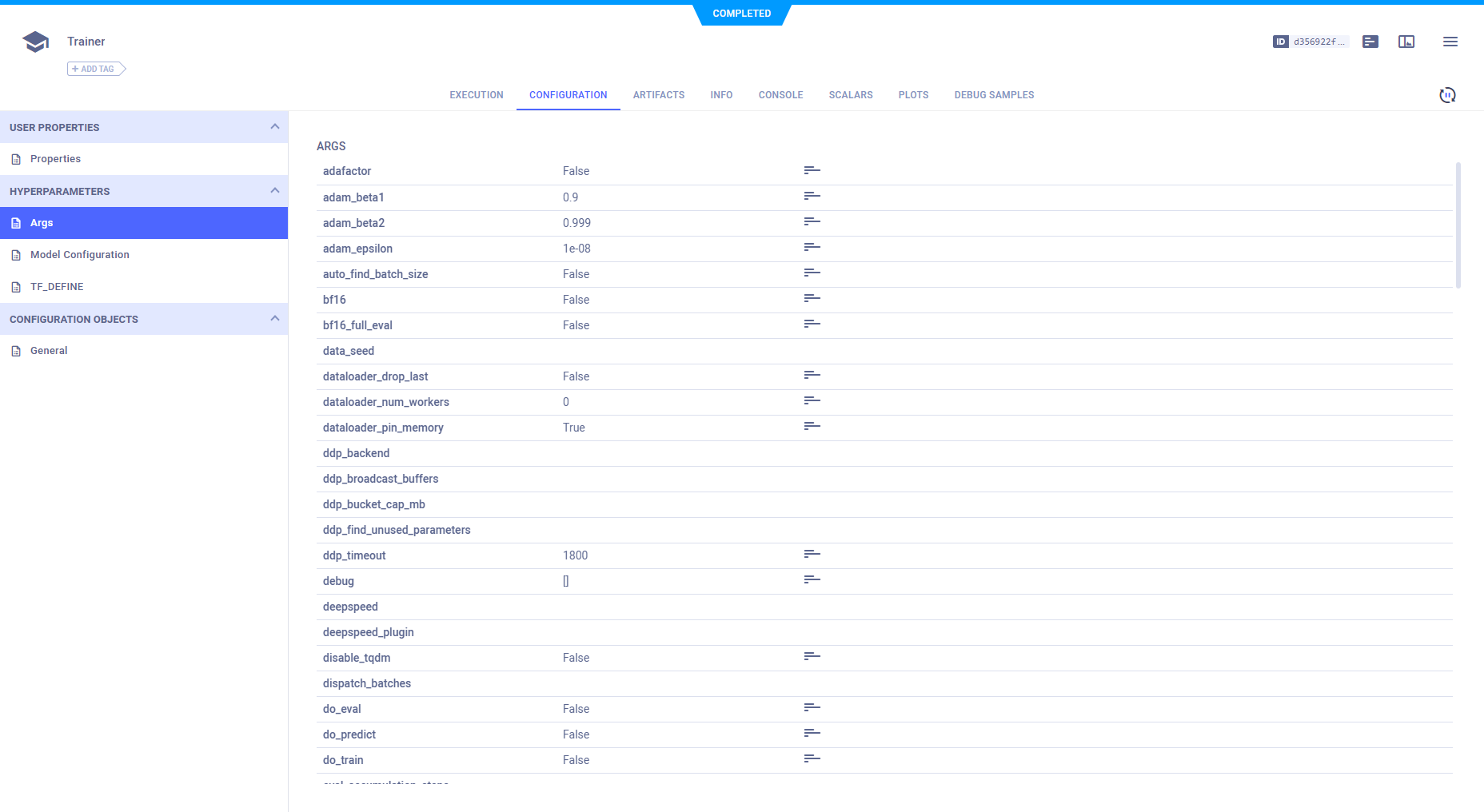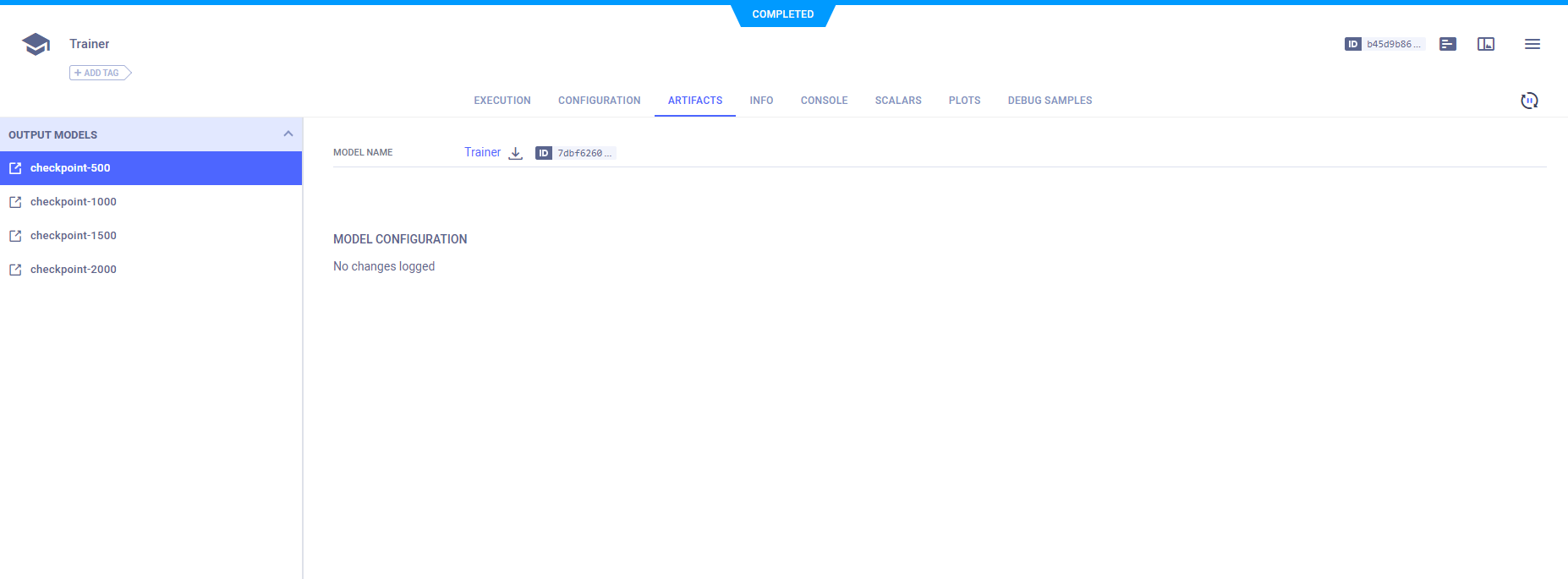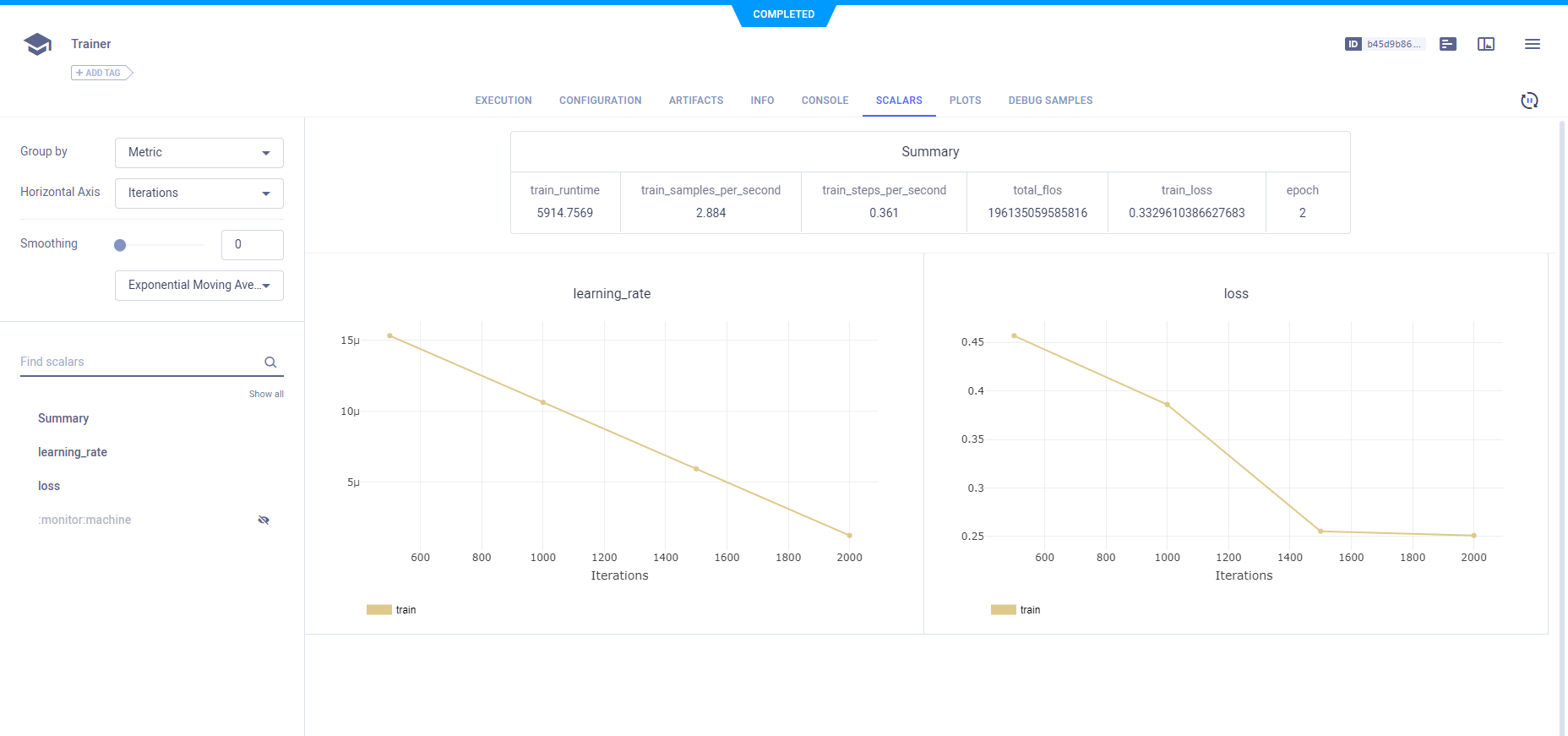2.4 KiB
| title |
|---|
| Transformers |
The HuggingFace Transformers example
demonstrates how to integrate ClearML into your Transformer's PyTorch Trainer
code. When ClearML is installed in an environment, the Trainer by default uses the built-in ClearMLCallback,
so ClearML automatically logs Transformers models, parameters, scalars, and more.
When the example runs, it creates a ClearML task called Trainer in the HuggingFace Transformers projects. To change
the task’s name or project, use the CLEARML_PROJECT and CLEARML_TASK environment variables respectively.
For more information about integrating ClearML into your Transformers code, see HuggingFace Transformers.
WebApp
Hyperparameters
ClearML automatically captures all the PyTorch trainer parameters.
Notice in the code example that only a few of the TrainingArguments are explicitly set:
training_args = TrainingArguments(
output_dir="path/to/save/folder/",
learning_rate=2e-5,
per_device_train_batch_size=8,
per_device_eval_batch_size=8,
num_train_epochs=2,
)
ClearML captures the arguments specified in the preceding code, as well the rest of the TrainingArguments and their default
values.
View the parameters in the experiment's CONFIGURATION tab > Hyperparameters section.
Models
In order for ClearML to log the models created during training, the CLEARML_LOG_MODEL environment variable is set to True.
ClearML automatically captures the model snapshots created by the Trainer, and saves them as artifacts. View the snapshots in the experiment's ARTIFACTS tab.
Scalars
ClearML automatically captures the Trainer's scalars, which can be viewed in the experiment's Scalars tab.


